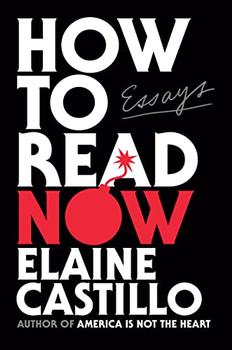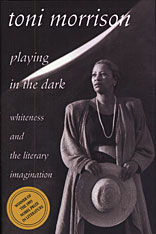Summary | Excerpt | Reviews | Beyond the Book | Read-Alikes | Genres & Themes | Author Bio

Essays
by Elaine CastilloThis article relates to How to Read Now
 The novelist Toni Morrison (1931-2019), author of The Bluest Eye, Beloved and many other famous works, is often considered one of the greatest and most influential American writers. However, as Elaine Castillo draws attention to in How to Read Now, Morrison is known mostly for her novels and less for what is arguably one of the most important texts ever written on American literature, a slim but significant 1992 volume of literary criticism titled Playing in the Dark: Whiteness and the Literary Imagination. Castillo calls Playing in the Dark "the urtext on the insidious racial backbone of our reading culture," and recalls being alarmed when she mentioned it during events on a book tour only to "realize that many in the audience had not read it and, indeed, seemingly hadn't ever had a substantial reckoning with the politics, especially racial politics, of their reading practices."
The novelist Toni Morrison (1931-2019), author of The Bluest Eye, Beloved and many other famous works, is often considered one of the greatest and most influential American writers. However, as Elaine Castillo draws attention to in How to Read Now, Morrison is known mostly for her novels and less for what is arguably one of the most important texts ever written on American literature, a slim but significant 1992 volume of literary criticism titled Playing in the Dark: Whiteness and the Literary Imagination. Castillo calls Playing in the Dark "the urtext on the insidious racial backbone of our reading culture," and recalls being alarmed when she mentioned it during events on a book tour only to "realize that many in the audience had not read it and, indeed, seemingly hadn't ever had a substantial reckoning with the politics, especially racial politics, of their reading practices."
Playing in the Dark, which is comprised of three essays adapted from a series of lectures given at Harvard University, focuses on the ways in which works by canonical American authors interact with an existence Morrison refers to as "Africanist" — "a nonwhite, Africanlike…presence or persona…constructed in the United States." She specifies that she is not interested in the authors' own views on race or racism, but rather in how these influential figures in American literature have consciously or unconsciously incorporated elements of a thoroughly racialized society into their work. In her analyses, she demonstrates how fundamental Africanism has been to constructing and maintaining whiteness in American society.
For example, in looking at Willa Cather's novel Sapphira and the Slave Girl, Morrison shows how the white slave-owning title character's role in the abuse of an enslaved Black girl serves as a means of disassociating herself from her own physical presence in the world. In general, Playing in the Dark explores how the existence of American whiteness and the positive elements associated with it — innocence, individualism and independence, strength, virility and beauty — are dependent on the manipulation, ownership or oppression of an Africanist other. Other works touched on include Mark Twain's The Adventures of Huckleberry Finn, Edgar Allen Poe's Narrative of Arthur Gordon Pym and Ernest Hemingway's To Have and Have Not. While the material covered in Playing in the Dark is relatively limited, the patterns the author highlights have larger implications for literature and American society in general. The book can be read as a kind of analysis of the American subconscious, and of the often unspoken ideas on which (white) national identity and perception rely.
While it may not be as popular as other works of Morrison's, Playing in the Dark is highly respected in critical, academic and literary circles. Upon its publication, it prompted Diane Middlebrook of the Los Angeles Times to refer to Morrison as "one of the living writers who really matter in America." Michael Eric Dyson, writing for the Chicago Tribune, called the book her "impressive debut as a critical intellectual." According to TIME magazine, Playing in the Dark was one of the most-assigned texts in college classrooms as of 2016.
In How to Read Now, Castillo builds on the critical work done by Morrison and others by analyzing texts and other media through a lens attuned to the structural realities of the society in which they were created. This type of lens may have been best described by Morrison herself in Playing in the Dark, where she compares these structural realities to a container holding a fish in water:
"It is as if I had been looking at a fishbowl — the glide and flick of the golden scales, the green tip, the bolt of white careening back from the gills; the castles at the bottom, surrounded by pebbles and tiny, intricate fronds of green; the barely disturbed water, the flecks of waste and food, the tranquil bubbles traveling to the surface — and suddenly I saw the bowl, the structure that transparently (and invisibly) permits the ordered life it contains to exist in the larger world."
Filed under Books and Authors
![]() This article relates to How to Read Now.
It first ran in the August 3, 2022
issue of BookBrowse Recommends.
This article relates to How to Read Now.
It first ran in the August 3, 2022
issue of BookBrowse Recommends.
If you want to build a ship, don't drum up people... but rather teach them to long for the endless immensity of the...
Click Here to find out who said this, as well as discovering other famous literary quotes!
Your guide toexceptional books
BookBrowse seeks out and recommends the best in contemporary fiction and nonfiction—books that not only engage and entertain but also deepen our understanding of ourselves and the world around us.